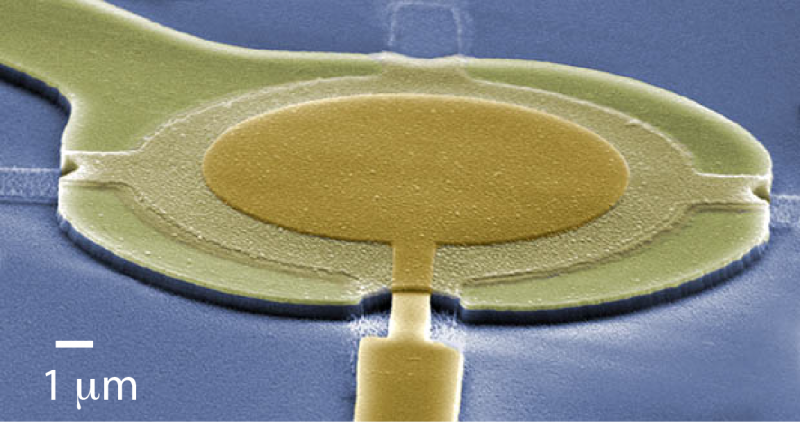Researchers beat the quantum limit of microwave measurements

Research groups at Aalto University and the University of Jyväskylä have demonstrated a new microwave measurement method that goes to the quantum limit of measurement and beats it. The new method can potentially be used for example in quantum computing and measurement of gravitational waves. The results were published in Physical Review Letters on 6.3.2017, one of the most prestigious journals of physics.
According to the Heisenberg uncertainty principle in quantum mechanics, an observer cannot simultaneously obtain accurate information of both the position and the momentum of a particle. This principle sets a fundamental limit to any measurement. In quantum mechanics even light, or more generally electromagnetic waves, can be represented by particles, photons, and thus their detection is subject to the uncertainty principle. Without any uncertainties, even faintest signals could be measured and for example mobile phone network would operate anywhere in the world with a single access point.
For radio- and microwaves used in telecommunication, the measurement uncertainties result from the technical imperfections. They pose much more serious limitations to the measurement of signals than the quantum limit. However, quantum limit of microwave measurement has so far been reached with superconducting circuits used in quantum computing. In earlier related research, Aalto and Jyväskylä groups closely approached it by combining microwave resonators with vibrating nanodrums.
To the quantum limit and beyond with nanodrums
The groups use a novel technique to drive their nanodrums to realize a measurement that even goes beyond the quantum limit. For the particle this would be possible by measuring only either the position or momentum, and completely discarding the information about the other property. "For a light wave, accessing only part of the wave and discarding the information in the other part realizes an analogous measurement", explains Caspar Ockeloen-Korppi, who did the measurement using the nanodrums.
The research groups have patented the measurement scheme. Professor Mika Sillanpää, who lead the research, highlights the possible application areas: "It can be used in accessing tiny signals for example in quantum computing and perhaps also in measurement of gravitational waves."
In addition to Ockeloen-Korppi and Sillanpää, the research team consisted of Juha-Matti Pirkkalainen, Erno Damskägg, Tero Heikkilä and Francesco Massel. The work was done in the Academy of Finland Center of Excellence on Low Temperature Quantum Phenomena and Devices, and it was also partially funded by the European Research Council.
More information: C. F. Ockeloen-Korppi et al. Noiseless Quantum Measurement and Squeezing of Microwave Fields Utilizing Mechanical Vibrations, Physical Review Letters (2017). DOI: 10.1103/PhysRevLett.118.103601
Journal information: Physical Review Letters
Provided by University of Jyväskylä



















